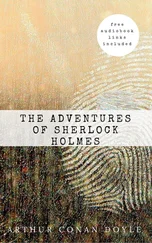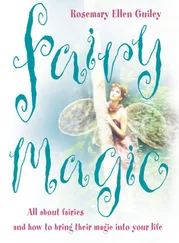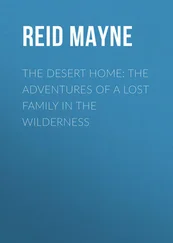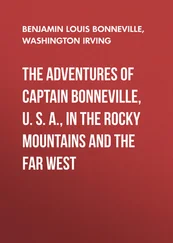I went through a particularly gruesome episode with Animal Control last year after one of my dogs got excited and nipped me on a training run. Even though it was my own dog and was my fault, and I wasn’t even hurt, I dutifully reported the incident (against the dire warnings of all my musher friends) when I got a tetanus booster shot. Extricating myself from Animal Control’s spider web took me two months, including a 10-day quarantine for the dog, half a dozen letters and phone calls, a 100-dollar fine, and a trip to court to get two additional tickets thrown out. At one point I was seriously worried about being able to continue training for the Iditarod.
Needless to say, I have no intention of ever reporting another dog bite, or even giving Animal Control the time of day if I don’t have to do so. It’s a sad commentary that the Mat-Su Borough, the dog mushing capital of the world which proudly advertises itself as the Home of the Iditarod, has an animal control code easily capable of shutting down any respectable musher on the strength of a few groundless accusations, while the true animal abusers never seem to get caught.
Anyway, for an entire day there are 20 people buzzing around my tiny cabin and dog lot, a goodly number of whom speak lots of Russian and very little English. I’m continually concerned that if any of Kim’s guests gets bitten by a dog or injured on the sleds, I’ll probably lose everything I own, not merely the dogs and any hope of running the Iditarod. I finally just stop worrying about it since there’s not anything I can do.
Once things get moving, Kim and a friend take the sleds on three-mile runs giving rides to the Russians and their Alaskan sponsors. While the girls are handling the main event with the dogs, I’m able to chat with the Russian chaperones and American teachers. I’m surprised to find out the Russians are from a suburban area near Moscow, not a lot different from, say, one of the bedroom communities near Anchorage. They’ve never seen a dog lot, and apparently have little experience in rural, near-wilderness settings like the Upper Susitna Valley.
When Bert told me I was going to be invaded, I simply assumed the Russians would be from the Far East or Siberia, areas with close ties to Alaska since the collapse of the Iron Curtain (which was often called the Ice Curtain in this part of the world). These visitors are actually more like the Europeans who flood Talkeetna every summer, with Continental outlooks and experiences. Although Southcentral Alaska’s forests and climate make it almost identical to much of northern Russia, including areas near Moscow, the 49th State might as well be on another planet for these folks, judging from the questions they ask.
I studied Russian for several years in college and was reasonably fluent at one time, but I avoid any conversations. To say my command of the language is somewhat rusty would be an understatement: Russian decays very quickly for non-native speakers like me, and I’d be lucky to get from the Moscow airport to a hotel without winding up on a bus to Kazakhstan.
To my visitors’ great interest, I point out a couple of my dogs have actually been to Russia. Eddie and Weasel ran on the Hope ’92 race from Nome to Anadyr with Diana Moroney; Eddie made it all the way, but Weasel had pups in Provideniya, a couple of which are now mainstays of Diana’s team. I’ve often thought it a strange irony some of my dogs have traveled to places I’ve never been — such as Russia, a place I’ve wanted to visit for many years.
The entourage departs about sunset; I’m relieved everything went well. Next time, though, I’d like a bit more warning. I can use the time to brush up on my Russian so I can minimize the chances of inadvertently causing some kind of international incident. I wonder how I’d say, “Sorry about that — maybe the doctor in Anchorage can sew your finger back on….”
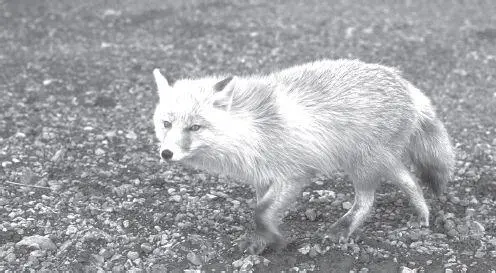
Foxes are found all along the Iditarod. They scavenge leftovers from checkpoints and prowl the remote stretches waiting for mushers to stop their teams for a snack. Unfortunately, they also sometimes carry rabies.
November 15, 1995
Montana Creek, Alaska
Every musher is, by definition, an astute observer of wildlife. This sort of goes with the territory because a dog team isn’t too far removed from being wildlife itself.
For instance, on the trail it’s hard not to take more than a passing interest in moose and other wilderness denizens capable of eliciting hair-raising reactions from an easily excited pack of instinctive predators.
Even in the dog lot there are more animals to consider than just the dogs. A moose can wander into a dog yard, creating instant mayhem as the dogs go ballistic trying to get at it, even though most of them probably wouldn’t know what to do with it if they caught it. Bears occasionally figure out that chained dogs aren’t a threat and will nonchalantly parade right through the lot looking for munchies while the dogs cower in their houses. (While bears don’t eat dogs, it’s been rumored they will take puppies if the opportunity presents itself.)
And smaller critters merit attention, too. Canny foxes and coyotes prowl the edges of the lot looking for food, and squirrels and mice and voles can demolish a bag of dog food faster than it can be unloaded from the truck. Even the resident house cat wandering where it shouldn’t can cause a commotion, since not all sled dogs are exactly on speaking terms with felines.
But easily the most persistent of God’s creatures that bedevil mushers are the ravens. Central to Native mythology for millennia because of their longevity and intelligence and mischievous exploits, ravens can drive a musher to distraction. Indeed, the black beaked bombers sometimes seem to make a game of playing with a frazzled kennel owner, staging hit-and-run raids on food caches and trash dumps with the skill and cunning of a Special Forces A-Team. Edgar Allan Poe had nothing on mushers where ravens are concerned, and many a frustrated kennel owner would love to tell every one of the brazen beady-eyed birds “Nevermore!”
Ravens and dog lots are (to the ravens anyway) a marriage made in heaven. There are always scraps of food and bits and pieces of all kinds of interesting things around the place, and that’s enough to mark it as a raven shopping mall, complete with food court. It doesn’t matter if the munchies or baubles are in plastic bags or boxes; ravens can outwit even child-proof containers with dismaying ease, usually by simply ripping them apart with their powerful beaks and claws. The dark demolishers can even open commercial trash containers: on the now-closed Adak Naval Station, it was a serious offense to leave a dumpster unlocked. The feathered felons knew how to pry open the swinging side doors, after which they would throw everything inside, outside, where they would sort through it like browsers at a yard sale.
Racing season opens up a whole new world of possibilities for the beady-eyed beasts. Ravens long ago deduced that sled dog races are nothing more than long-distance smorgasbords with lots of good scenery. They seem to know mushers’ favorite spots to snack their dogs on the trail and won’t even wait for the team to get out of sight before they descend for their feast. When my team sees a group of ravens on the trail ahead they treat it as a chance to get even with the arrogant aviators. The ravens, of course, will wait until the very last second to flutter out of reach of the frantic dogs, which steams up the team even more.
Ravens have discovered checkpoints, naturally. In some places they are even worse than wolves about breaking into mushers’ food bags. And the damage isn’t limited to rifling food bags. At a particular Iditarod checkpoint which will remain nameless, a local cabin owner unwittingly repainted his airplane the same colors as the color-coded Iditarod food bags. He never could figure out why the resident ravens were so bent on tearing holes in his fabric-covered wings for no apparent reason.
Читать дальше





